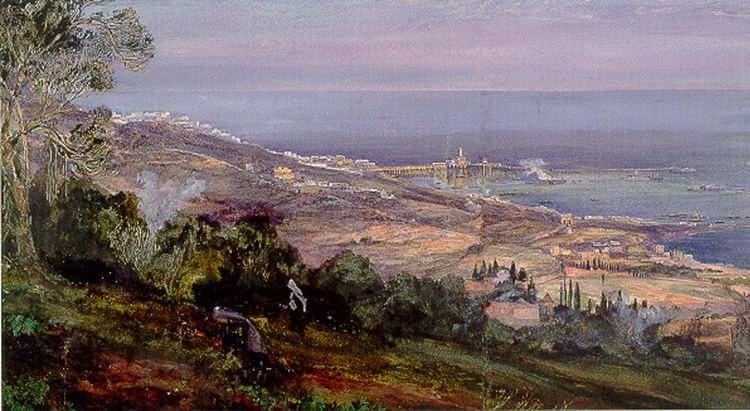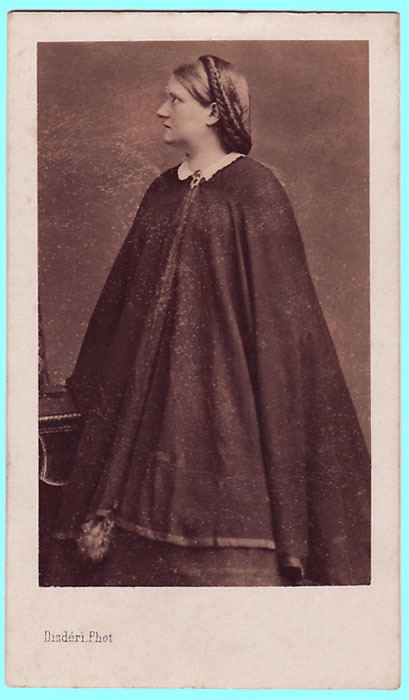Nationality British Books An American Diary, 1857-8 Parents Benjamin Smith | Role Artist Name Barbara Bodichon | |
Full Name Barbara Leigh Smith Born 8 April 1827 ( 1827-04-08 ) Carlton Crescent, Southampton Died June 11, 1891, Robertsbridge, United Kingdom | ||
Barbara Leigh Smith Bodichon (8 April 1827 – 11 June 1891) was an English educationalist and artist, and a leading mid-19th-century feminist and women's rights activist.
Contents

Family background and parents

Barbara Bodichon was the extra-marital child of Anne Longden, a milliner from Alfreton, and the Whig politician Benjamin (Ben) Leigh Smith (1783–1860), the only son of the Radical abolitionist William Smith. Benjamin had four sisters. One, Frances (Fanny) Smith, married William Nightingale (né Shore) and produced a daughter, Florence, the nurse and statistician; another, Joanna Maria, married John Bonham-Carter (1788–1838) MP and founded the Bonham Carter family. Ben's father wanted him to marry Mary Shore, the sister of William Nightingale, now a relative by marriage.

Ben Smith's home was in Marylebone, London, but from 1816 he inherited and purchased property near Hastings: Brown's Farm near Robertsbridge, with an extant house built about 1700, and Crowham Manor, Westfield, which included 200 acres (0.81 km2). Although a member of the landed gentry, Smith held radical views. He was a Dissenter, a Unitarian, a supporter of free trade, and a benefactor to the poor. In 1826 he bore the cost of building a school for the inner city poor at Vincent Square, Westminster, and paid a penny a week towards the fees for each child, the same amount as paid by their parents.

On a visit to his sister in Derbyshire in 1826, Smith met Anne Longden. She became pregnant by Smith and he took her to the south of England, establishing her in a rented lodge at Whatlington, a small village near Battle, East Sussex. There she lived as "Mrs Leigh", the surname of Ben Smith's relations on the nearby Isle of Wight. Barbara's birth created a scandal because the couple did not marry; illegitimacy carried a heavy social stigma. Smith rode from Brown's Farm to visit them daily, and within eight weeks Anne was pregnant again. When their son Ben was born, the four of them went to America for two years, during which time another child was conceived.
On their return to Sussex they lived openly together at Brown's and had two more children. After their last child was born in 1833, Anne became ill with tuberculosis and Smith leased 9 Pelham Crescent, Hastings, which faced the sea; the healthy properties of sea air were highly regarded at the time. A local woman, Hannah Walker, was employed to look after the children. Anne did not recover, so Smith took her to Ryde, Isle of Wight, where she died in 1834.
Life
Early on, Barbara showed a force of character and breadth of sympathies that would win her a prominent place among philanthropists and social workers. She and a group of London friends began to meet regularly in the 1850s to discuss women's rights, and became known as "The Ladies of Langham Place". This became one of the first organised women's movements in Britain. They pursued many causes vigorously, including their Married Women's Property Committee. In 1854, she published her Brief Summary of the Laws of England concerning Women, which was useful in promoting the passage of the Married Women's Property Act 1882. During this period she became close friends with the artist Anna Mary Howitt, for whom she sat on several occasions.
In 1857, she married an eminent French physician, Dr Eugène Bodichon, and although wintering for many years in Algiers, she continued to lead the movements she had initiated on behalf of Englishwomen.
In 1858, she set up the English Women's Journal, an organ for discussing employment and equality issues directly concerning women, in particular manual or intellectual industrial employment, expansion of employment opportunities, and reform of laws pertaining to the sexes.
In 1866, cooperating with Emily Davies, she came up with a scheme to extend university education to women. The first small experiment in this at Hitchin developed into Girton College, Cambridge, to which she gave liberally of her time and money.
Bodichon was a Unitarian, who wrote of Theodore Parker: He prayed to the Creator, the infinite Mother of us all (always using Mother instead of Father in this prayer). It was the prayer of all I ever heard in my life which was the truest to my individual soul. (Lingwood, 2008)
Despite all her public interests, she found time for society and her favourite art of painting. She studied under William Holman Hunt. Her water colours, exhibited at the Salon, the Royal Academy and elsewhere, showed great originality and talent, and were admired by Corot and Daubigny. Her London salon included many of the literary and artistic celebrities of her day. She was George Eliot's most intimate friend, and according to her, the first to recognise the authorship of Adam Bede. Her personal appearance is said to be described in that of Romola. Bodichon died at Robertsbridge, Sussex, on 11 June 1891.
Education and activism
Bodichon’s maiden name was originally Smith. She was an English leader in the movements of education and political rights for women during the 1800s. She became Barbara Bodichon after marrying French physicist Éugene Bodichon in 1857, but marriage did not deter her from continuing her campaigns for women's rights to education.
Bodichon studied at the Ladies' College in Bedford founded in London, England in 1829. Here she was given instruction for work as a professional artist rather than an art instructor. Bodichon came from a liberal Unitarian family with a private income. Their independent wealth gave Bodichon more freedom to grow as an artist.
In 1852, after she had enrolled in Bedford College, she developed and opened Portman Hall School in Paddington, in conjunction with Elizabeth Whitehead.
In 1854, Bodichon published the Brief Summary in Plain Language of the Most Important Laws Concerning Women, which was crucial in the passage of the Married Women’s Property Act. In 1866, in collaboration with Emily Davies, she presented the idea of university education for women, being able to conduct the first experiment at a college in Hitchin, which developed into Girton College, which Bodichon became a dedicated patron. She would study under the English artist William Henry Hunt to develop her skill in watercolors.
Bodichon belonged to the Langham Place Circle, a group of forward-thinking women artists who developed the English Woman's Journal. During the 1850s, this group fought for women's education, employment, property rights, and suffrage. In 1859, Bodichon, along with many female artists including Eliza Fox, Margaret Gillies, and Emily Mary Osborn all signed a petition demanding access for women to the Royal Academy School. Their request was denied, stating that it would require the Royal Academy to develop "separate" life classes. In 1860, Laura Herford, one of the women artists fighting for access, submitted an application to the Royal Academy School using only her initials. She was accepted, much to the embarrassment of the Academy. Herford's enrollment was permitted, and gradually more women artists were accepted in subsequent years.
Refurbishment
In 2007, the British equal-rights campaigner and feminist Lesley Abdela came across the grave of Barbara Bodichon in the tiny churchyard of Brightling, East Sussex, about 50 miles (80 km) from London. It was in a state of disrepair, with its railings rusted and breaking away, and the inscription on the tomb almost illegible. The historian Dr Judith Rowbotham at Nottingham Trent University issued an appeal for funds to restore the grave and its surroundings, which raised about £1,000. The railings were sand-blasted and repainted, and the granite tomb was cleaned.
